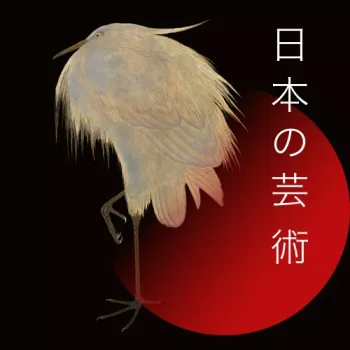Long sword (katana) and scabbard 1300-50
Steel, rayskin, shakudo, wood, silk, gold | 7.4 cm (Width) x 7.4 cm (Depth); 92.0 cm (Length) (whole object) | RCIN 72786

Rai Kunimitsu (active 1326-51)
Master: Long sword (katana) and scabbard 1300-50
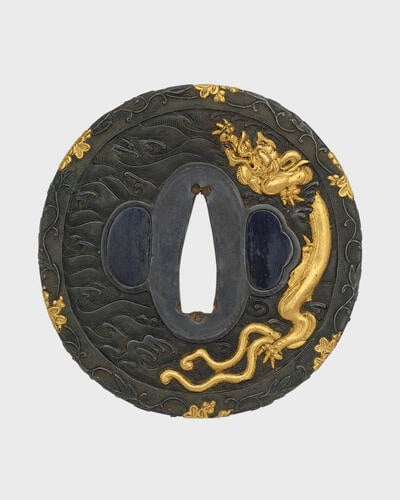
Rai Kunimitsu (active 1326-51)
Master: Long sword (katana) and scabbard 1300-50
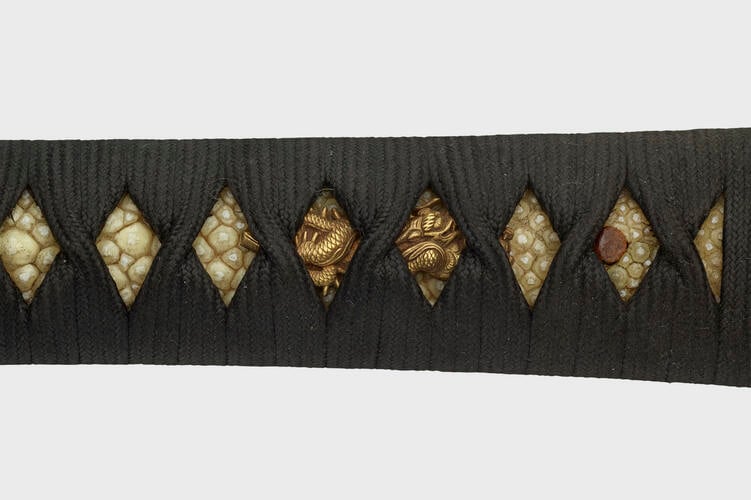
Rai Kunimitsu (active 1326-51)
Master: Long sword (katana) and scabbard 1300-50
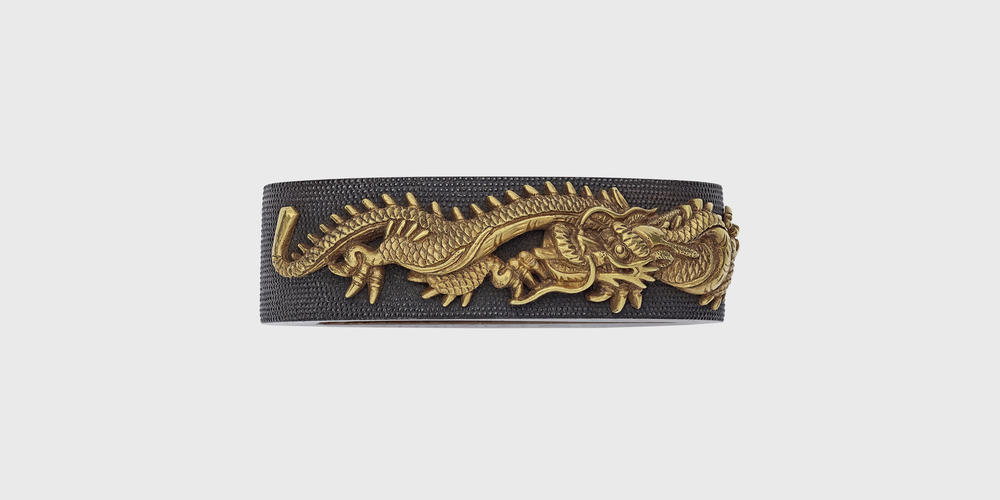
Rai Kunimitsu (active 1326-51)
Master: Katana and scabbard 1300-50
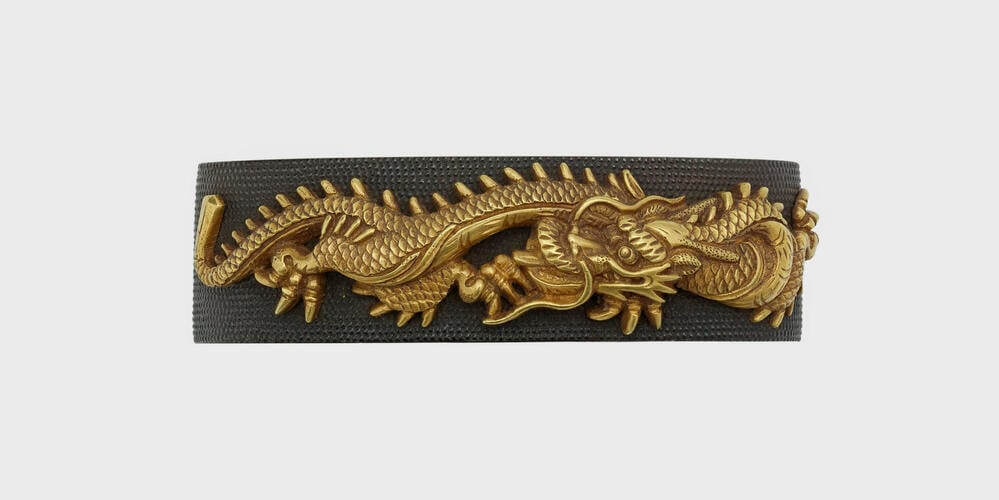
Rai Kunimitsu (active 1326-51)
Master: Long sword (katana) and scabbard 1300-50
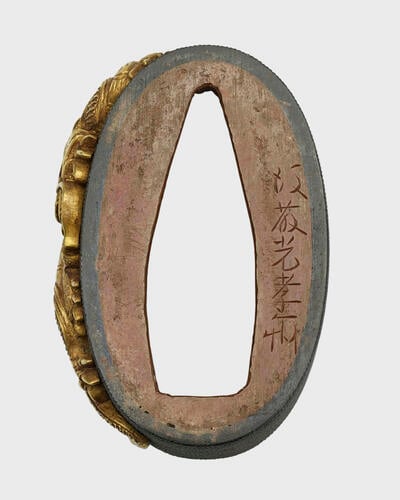
Rai Kunimitsu (active 1326-51)
Master: Long sword (katana) and scabbard 1300-50
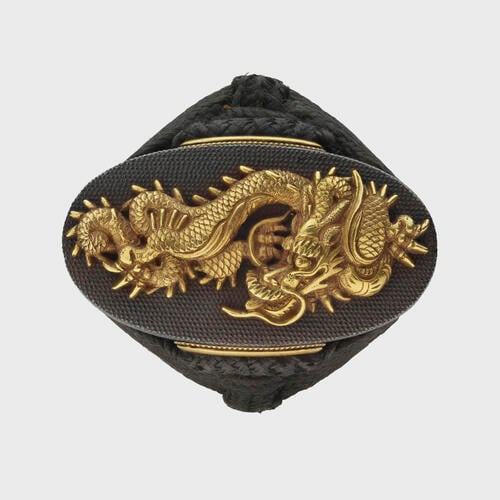
Rai Kunimitsu (active 1326-51)
Master: Long sword (katana) and scabbard 1300-50

Rai Kunimitsu (active 1326-51)
Master: Long sword (katana) and scabbard 1300-50

Rai Kunimitsu (active 1326-51)
Master: Long sword (katana) and scabbard 1300-50
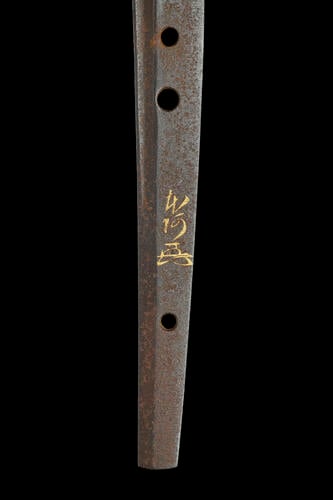
Rai Kunimitsu (active 1326-51)
Master: Long sword (katana) and scabbard 1300-50

Rai Kunimitsu (active 1326-51)
Long sword (katana) and scabbard 1300-50











-
A katana (long sword), paired with a wakizashi (short sword, RCIN 62627) to form a daishō.
In the Momoyama period (1573–1615), paired swords became more prevalent and it was around this time that the fashion for daishō mounted as a matched pair became fully established. The metal fittings of the swords were often decorated with a regular theme or design. Only the samurai were permitted to carry the daishō – which they were required to wear at the shōgun’s court – and this became the defining style of sword mounting for those who could afford such fine quality lacquer and metalwork.The decorative theme on the lacquer scabbards and metal fittings of this daishō is the dragon, a powerful creature in Japanese mythology with links to both Buddhism and Shintō. The fine gold makie lacquer scabbards feature a dragon in low relief (hiramakie) chasing the Buddhist pearl of enlightenment. All the fine copper alloy mounts by the Gotō school are of high-quality shakudō with a nanako (fish roe) ground and highlights in gold. Of significance is the use of the paulownia (kiri) crest highlighted in gold on the metal fittings. This crest was, apart from a brief period in the late sixteenth century, reserved exclusively for the imperial family.
It is not uncommon for the two daishō blades to be by different makers, and indeed it is rare to find both by the same maker. The wakizashi blade (RCIN 62627) is unsigned but dates to the early Edo period, with a strong tempering pattern (hamon) known as clove flowers (chōji) and horse teeth (gunome). However, the katana is a heavily shortened blade of the early fourteenth century. It bears the gold inlaid signature of Rai Kunimitsu (active 1326–51), who is thought to have been the son (or student) of Rai Kunitoshi. The grain of the steel and the refined, straight tempering pattern (suguha) are indicative of his work.
In the remounting process, the katana blade would have been shortened at the tang (nakago), resulting in the loss of the original signature. The remounting was undertaken by the Hon’ami family, who were awarded the title Tenka no Tōken Mekikijo (‘National Office for Sword Appraisal’) during the Edo period. As well as providing certificates of authenticity for blades, the family cut down long early swords and remounted them in the style and taste of current period. They would often inlay the name of the original smith (although not copying his signature), as well as their own name, or simply the character ‘Hon’, together with their art seal (kaō) in gold on the tang of the blade. Ownership of a blade by Kunimitsu would have been extremely desirable.
Text adapted from Japan: Courts and Culture (2020)Provenance
Probably acquired by Prince Alfred, Duke of Edinburgh.
Loaned for the Japan Society exhibition 'Arms and Armour of Old Japan' in Pall Mall East, 1905.
Sent from Windsor Castle for exhibition at The Japan-British Exhibition at White City, London, in 1910. -
Creator(s)
(nationality)Acquirer(s)




